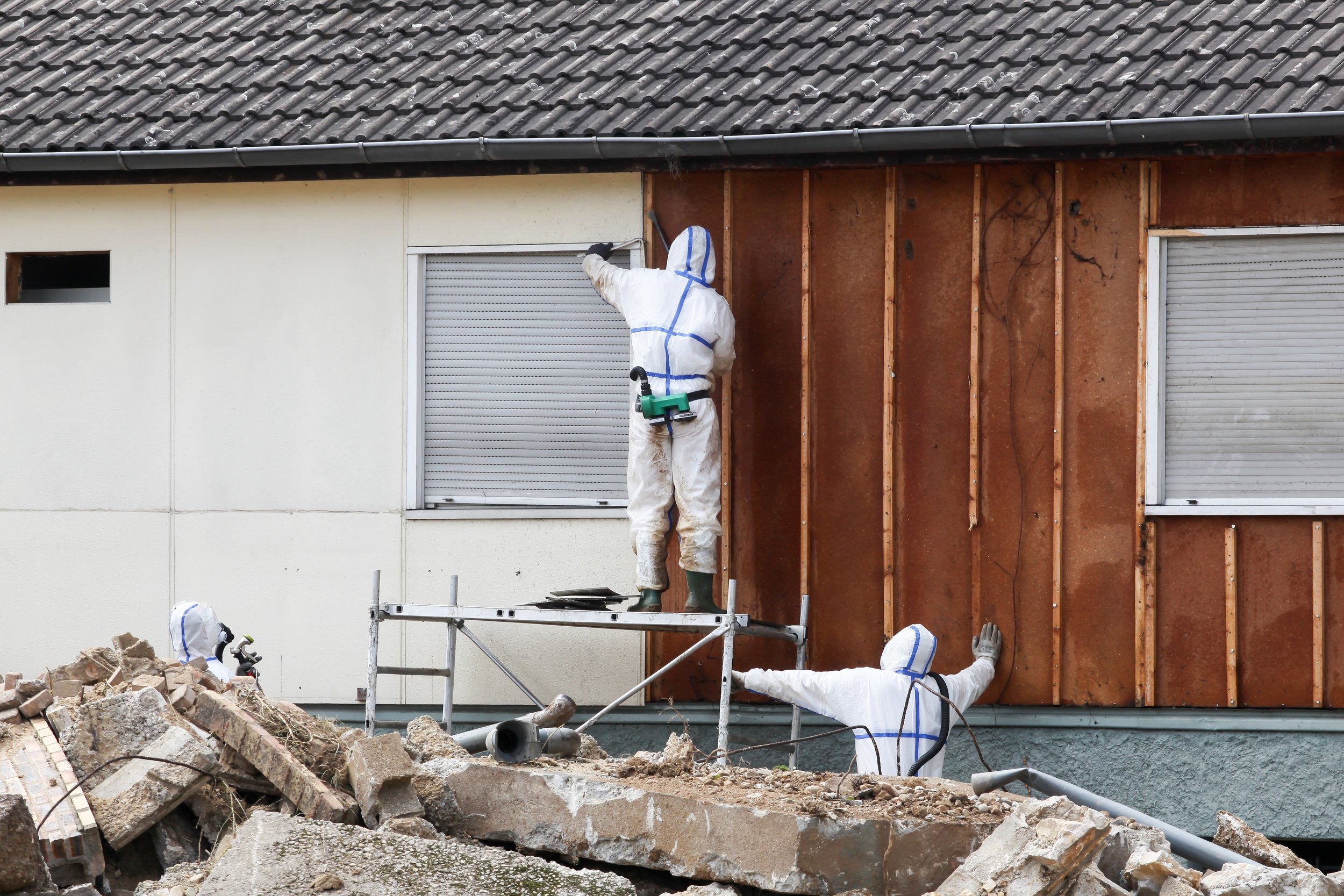Case Study: Asbestos Abatement Project for a Commercial Building
A mid-sized commercial office building located in an urban area. The building was undergoing renovation and expansion, and the client needed to ensure that any hazardous materials, specifically asbestos, were safely removed before proceeding with construction work.
The Incident: During the initial stages of the renovation, a routine inspection revealed that asbestos-containing materials (ACMs) were present in several areas of the building. Specifically, asbestos was found in ceiling tiles, floor tiles, and insulation within the HVAC ducts. These materials posed significant health risks if disturbed, making immediate remediation essential. The discovery came as a surprise to the building's management team, who were unaware of the asbestos contamination.
Immediate Response: Upon learning of the asbestos contamination, the building’s project manager immediately contacted an asbestos abatement company, WestRock Restoration, to handle the removal and ensure the safety of all workers and future tenants.
WestRock's emergency response team was dispatched within hours to assess the situation. They immediately initiated the following steps:
Isolation of the Area: Work areas were cordoned off using physical barriers and signage to prevent exposure to workers, contractors, and building occupants.
Notification to Relevant Authorities: WestRock filed the necessary permits with local environmental and health agencies as per regulatory requirements for asbestos abatement.
Establishing Air Monitoring: Continuous air monitoring was set up to measure fiber levels and ensure that the air quality remained safe throughout the abatement process.
Safety Protocols: The team utilized personal protective equipment (PPE) such as respirators, full-body suits, and gloves to minimize exposure to asbestos fibers.
Communication: Clear, concise, and ongoing communication was crucial throughout this project. The WestRock team maintained regular communication with the following stakeholders:
Building Management & Contractors: Frequent updates were provided on the abatement progress and any impacts on the renovation timeline.
Regulatory Authorities: WestRock ensured compliance with all local, state, and federal regulations by keeping authorities informed and submitting required reports and documentation.
On-Site Workers: All workers on the job were educated on asbestos risks and given daily briefings on safety procedures and air quality levels.
This communication helped alleviate concerns and ensured everyone involved was informed and aligned.
Damage Assessment: Once the site was secured, WestRock performed a comprehensive assessment of the areas affected by asbestos contamination. The key findings included:
Extent of Contamination: Asbestos was confirmed in the ceiling tiles, flooring, insulation, and HVAC ductwork. The total area affected was approximately 3,000 square feet.
Structural Integrity: Fortunately, the asbestos contamination was confined to non-structural elements, so the building’s structural integrity was not compromised.
Hazard Evaluation: No significant visible damage from water or fire was noted, but potential airborne asbestos fibers presented the primary health risk.
Repair and Restoration: Following the thorough assessment, WestRock implemented a step-by-step abatement strategy:
Removal of Asbestos-Containing Materials: The affected materials were carefully removed using wet methods to minimize fiber release. Specialized HEPA-filtered vacuums and equipment were used to ensure all asbestos was safely collected.
Encapsulation of Remaining Asbestos: In some areas, encapsulation was used as an alternative to full removal, where it was feasible and safe. This involved applying a sealing material that bound the asbestos fibers and prevented them from becoming airborne.
Cleaning and Decontamination: Once all materials were removed, the area underwent an extensive cleaning process. This included wiping down all surfaces, cleaning HVAC systems, and conducting air scrubbing to eliminate any remaining fibers.
Final Air Monitoring: After abatement was complete, WestRock conducted a final round of air quality tests to confirm that fiber levels were within safe limits. Only after passing this test was the area declared safe for re-entry.
Preventive Measures: To ensure that future asbestos issues were avoided and that the building remained safe for future occupants, WestRock provided the following recommendations:
Ongoing Air Quality Monitoring: Recommend periodic air quality checks for the building, especially during ongoing renovations, to ensure any potential disturbances to remaining materials do not release fibers.
Asbestos Awareness Training: Offer asbestos safety training for all future contractors and maintenance staff working in the building.
Documentation and Record Keeping: Maintain detailed records of the abatement process, including areas treated, materials removed, and test results. This documentation would be useful for future building inspections and renovations.
Encapsulation of Remaining Materials: In areas where removal was not feasible, further encapsulation or protective measures were recommended to ensure no asbestos was disturbed during normal building operations.
Outcome: WestRock completed the abatement project ahead of schedule and within budget. The building’s air quality was restored to safe levels, and all asbestos-containing materials were either safely removed or encapsulated.
Key Outcomes:
The renovation project resumed without delay, with no safety incidents or health concerns arising from the asbestos contamination.
The building's management team received all necessary documentation and certifications of compliance.
Ongoing communication and preventive measures ensured the building remained free from asbestos exposure, even after the project was completed.
Connect with WestRock Restoration



